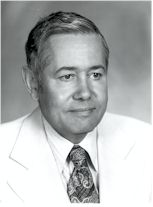Raymond W. Ketchledge: Difference between revisions
No edit summary |
No edit summary |
||
| Line 23: | Line 23: | ||
Over the course of his career he was granted over 60 patents, including some developed in pursuit of his hobby of remote controlled airplanes. | Over the course of his career he was granted over 60 patents, including some developed in pursuit of his hobby of remote controlled airplanes. | ||
In 1970 Ketchledge was elected to the National Academy of Engineering for his pioneering contributions to ESS. Previously he had been made a Fellow of the IEEE. He is also a member of the scientific honor society Sigma Xi. He was co-recipient of the IEEE Alexander Graham Bell Medal in 1976, along with Amos E. Joel, Jr., and [[William Keister|William Keister]] 'For conception and development of Electronic Switching Systems and their effective introduction into a nation-wide telephone system.' | In 1970 Ketchledge was elected to the National Academy of Engineering for his pioneering contributions to ESS. Previously he had been made a Fellow of the IEEE. He is also a member of the scientific honor society Sigma Xi. He was co-recipient of the IEEE Alexander Graham Bell Medal in 1976, along with [[Amos Joel: Electronic Telephone Switching|Amos E. Joel, Jr.]], and [[William Keister|William Keister]] 'For conception and development of Electronic Switching Systems and their effective introduction into a nation-wide telephone system.' | ||
== Further Research == | == Further Research == | ||
Revision as of 15:44, 1 September 2009
Born: 8 December 1919
Died: 23 October 1987
Early Life and Education
Raymond W. Ketchledge, born in Harrisburg, Pennsylvania on December 8, 1919, into the home of a Presbyterian minister. The family moved to Johnstown, New York, where Ketchledge attended high school. He received B.S. and M.S. degrees in electrical engineering from the Massachusetts Institute of Technology in 1942.
Early Career at Bell Labs
Ketchledge joined Bell Laboratories that same year. During the war, he worked on development of detection devices for enemy aircraft and submarines, including radar, infrared and sound detection. He was reassigned to telecommunications transmission work after the war, and was associated with the development of the first repeatered submarine cable system and, later, the L3 coaxial carrier system. His next assignment was in device development with responsibility for electron beam and gas discharge tubes.
Electronic Switching
In 1954, Ketchledge joined the new group being formed to develop electronic switching, a transformative project to replace older electromechanical equipment. In 1956 he was made Assistant Director of Switching System Development and three years later Director of the Electronic Switching Laboratory. As such, he served as both innovator and manager. He was responsible for the circuits and equipment for a trial of the Electronic Switching System (ESS) at Morris, Illinois in 1960 and the first No.1 ESS central office at Succasunna, New Jersey in 1965.
In 1966 Ketchledge was appointed Executive Director of the Electronic Switching Division which then transferred to the new Indian Hill Laboratory at Naperville, Illinois. As top ranking executive at the new facility, he had 1,500 engineers and technicians working for him. While in Illinois he served as a Director of the Naperville National Bank and was a member of the Illinois Science Advisory Council.
Later Career
Ketchledge left Illinois in October 1975 to assume his post as Executive Director of the Ocean Systems Division of Bell Laboratories, in Whippany, New Jersey. In this role, he continued to make contributions to military technology. He retired in 1982, moving to Florida in 1984, where he built a home lab to continue experimenting.
Professional Organizations, Accomplishments and Honors
Over the course of his career he was granted over 60 patents, including some developed in pursuit of his hobby of remote controlled airplanes.
In 1970 Ketchledge was elected to the National Academy of Engineering for his pioneering contributions to ESS. Previously he had been made a Fellow of the IEEE. He is also a member of the scientific honor society Sigma Xi. He was co-recipient of the IEEE Alexander Graham Bell Medal in 1976, along with Amos E. Joel, Jr., and William Keister 'For conception and development of Electronic Switching Systems and their effective introduction into a nation-wide telephone system.'
Further Research
Joel, Amos E. "Raymond W. Ketchledge: 1919-1987." Memorial Tributes, Volume 5. (Washington DC: National Academy of Engineering, 1992)
"Raymond Ketchledge, 67, an Electronics Inventor." New York Times. October 29, 1987
